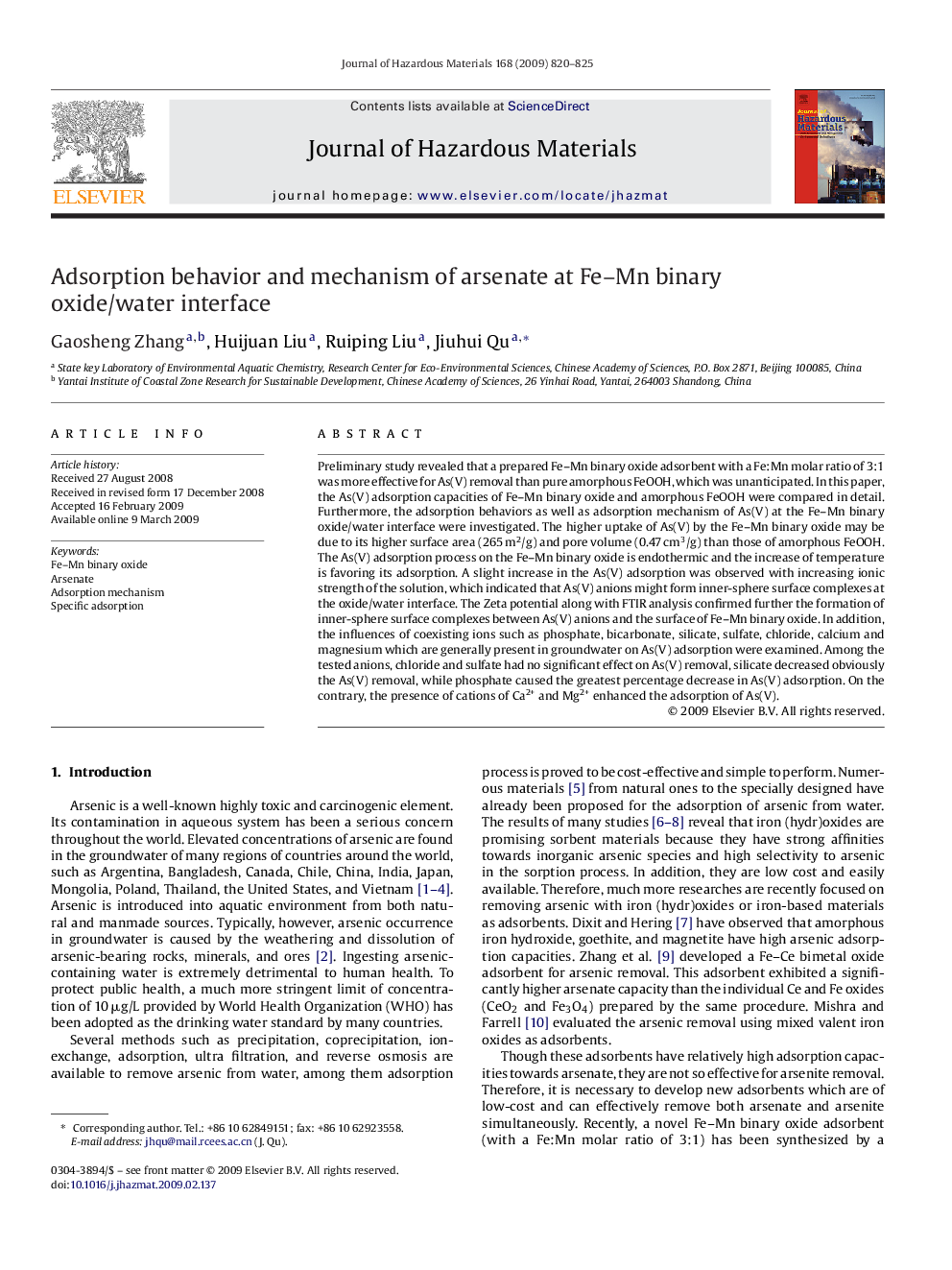| کد مقاله | کد نشریه | سال انتشار | مقاله انگلیسی | نسخه تمام متن |
|---|---|---|---|---|
| 581675 | 1453160 | 2009 | 6 صفحه PDF | دانلود رایگان |
عنوان انگلیسی مقاله ISI
Adsorption behavior and mechanism of arsenate at Fe-Mn binary oxide/water interface
دانلود مقاله + سفارش ترجمه
دانلود مقاله ISI انگلیسی
رایگان برای ایرانیان
کلمات کلیدی
موضوعات مرتبط
مهندسی و علوم پایه
مهندسی شیمی
بهداشت و امنیت شیمی
پیش نمایش صفحه اول مقاله

چکیده انگلیسی
Preliminary study revealed that a prepared Fe-Mn binary oxide adsorbent with a Fe:Mn molar ratio of 3:1 was more effective for As(V) removal than pure amorphous FeOOH, which was unanticipated. In this paper, the As(V) adsorption capacities of Fe-Mn binary oxide and amorphous FeOOH were compared in detail. Furthermore, the adsorption behaviors as well as adsorption mechanism of As(V) at the Fe-Mn binary oxide/water interface were investigated. The higher uptake of As(V) by the Fe-Mn binary oxide may be due to its higher surface area (265Â m2/g) and pore volume (0.47Â cm3/g) than those of amorphous FeOOH. The As(V) adsorption process on the Fe-Mn binary oxide is endothermic and the increase of temperature is favoring its adsorption. A slight increase in the As(V) adsorption was observed with increasing ionic strength of the solution, which indicated that As(V) anions might form inner-sphere surface complexes at the oxide/water interface. The Zeta potential along with FTIR analysis confirmed further the formation of inner-sphere surface complexes between As(V) anions and the surface of Fe-Mn binary oxide. In addition, the influences of coexisting ions such as phosphate, bicarbonate, silicate, sulfate, chloride, calcium and magnesium which are generally present in groundwater on As(V) adsorption were examined. Among the tested anions, chloride and sulfate had no significant effect on As(V) removal, silicate decreased obviously the As(V) removal, while phosphate caused the greatest percentage decrease in As(V) adsorption. On the contrary, the presence of cations of Ca2+ and Mg2+ enhanced the adsorption of As(V).
ناشر
Database: Elsevier - ScienceDirect (ساینس دایرکت)
Journal: Journal of Hazardous Materials - Volume 168, Issues 2â3, 15 September 2009, Pages 820-825
Journal: Journal of Hazardous Materials - Volume 168, Issues 2â3, 15 September 2009, Pages 820-825
نویسندگان
Gaosheng Zhang, Huijuan Liu, Ruiping Liu, Jiuhui Qu,